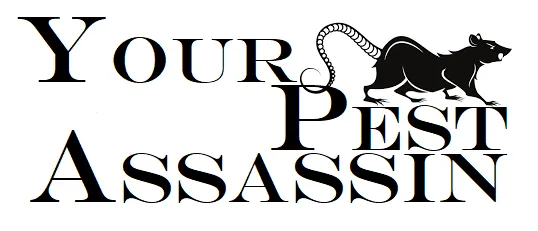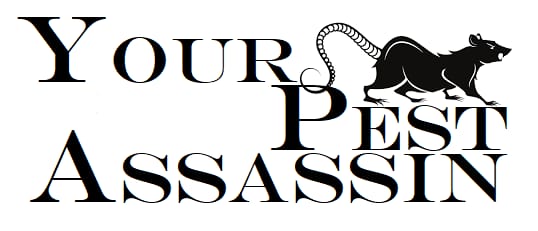Home | Knowledge Base Posts | How Long Does a Wasp Live
How Long Does a Wasp Live?
Understanding the Lifespan of a Wasp
Same Day Wasp Nest Treatment!
How Long Does a Wasp Live? In the simplest terms, the lifespan of a wasp greatly depends on its species and role within the colony. Worker wasps, for instance, usually live for 12-22 days, while the queen wasp can live up to one year. Male wasps, often called drones, have a slightly shorter lifespan and die shortly after mating. In essence, the fascinating life cycle of a wasp is a testament to the intricate workings of nature!
Wasps in the UK: A Brief Overview
Wasps are common in the UK, buzzing about gardens and parks during the warmer months.
There’s an astonishing diversity of wasp species in the United Kingdom, with over 9,000 types recorded. Nevertheless, when Brits speak about wasps, they generally refer to the Common Wasp or the German Wasp. These species are easily identifiable by their distinctive black and yellow stripes and are notorious for their stings. While wasps might seem like summer party crashers, they play essential roles in the ecosystem, such as pollination and controlling other pests. Despite their fearsome reputation, there’s plenty to appreciate and marvel at when considering these industrious insects.
The Importance of Understanding Wasp Lifespan
Understanding the lifespan of a wasp can help us appreciate these fascinating creatures even more. The length of a wasp’s life can vary significantly depending on the species and their role within the colony. Worker wasps, for instance, usually only live for a few weeks, while wasp queens can live for up to a year, ensuring the survival and growth of the colony. By gaining insights into how long a wasp lives, we can better understand their life cycle, behaviour patterns, and their crucial roles within ecosystems. Additionally, comprehending wasp lifespans can inform pest control strategies, ensuring actions are timed effectively to minimise environmental and environmental disruption. Let’s delve into the intricate lifespan of a wasp, demonstrating our gratitude for these oft-misunderstood creatures that share our planet.
How Long Does a Wasp Live? A Deep Dive
The question sparks curiosity and invites us to look beyond our initial impressions of these striking insects. Much like the diverse range of wasp species in our gardens and parks, the answer to that question isn’t a simple one-size-fits-all. The lifespan of a wasp can differ greatly depending on their species, gender, role within the colony, and environmental factors. However, the beauty of this question lies not merely in the answer itself but in the journey, it takes us on to understand the complex and fascinating world of wasps. So, as we embark on this journey together, let’s unravel the intriguing details surrounding the lifespan of a wasp and, in doing so, deepen our knowledge and appreciation of these remarkable creatures.
Types of Wasps Common in the UK
In the United Kingdom, while over 9,000 wasp species exist, two types primarily dominate our patios and picnic spots: the Common Wasp (Vespula vulgaris) and the German Wasp (Vespula germanica). These species are readily identifiable by their classic yellow and black banding, and they’re the most likely culprits if you’ve ever been stung by a wasp.
The Common Wasp, as the name suggests, is widespread across the UK. Recognisable for their bright yellow and black body, they are a familiar sight in gardens, especially in late summer. Wasp nests, constructed from a papery substance produced by chewing wood fibres, can often be found in the ground, in walls, or in roof spaces.
The German Wasp, similar to the Common Wasp in appearance, is slightly larger. German Wasps are also known for their aggressive behaviour when threatened; they are more likely to sting. They build similar nests to their common counterparts, often choosing to nest in the ground or in cavities in walls and roofs.
These two types of wasps are social insects living in complex, well-organised colonies. Understanding these species is a vital part of understanding the lifespan of wasps?” A wasp’s lifespan is linked to its species and role within the hive. So, let’s continue our journey, exploring the fascinating lifespans of these wasps.
Factors Influencing Wasp Lifespans
The Influence of Environment and Climate on Wasp Lifespans
The environment and climate significantly influence wasp lifespans. Wasps are ectothermic, meaning their body temperature largely depends on their environment. Therefore, in warmer climates, wasps tend to be more active, which, unfortunately, can shorten their lifespan due to increased energy expenditure. In contrast, during colder months, wasps become less active or even enter a state of dormancy.
Additionally, the availability of food resources greatly impacts a wasp’s lifespan. Wasps primarily feed on other insects and sugary substances, such as nectar or human food waste. Therefore, environments abundant with these resources can support larger wasp populations and potentially longer lifespans.
Climate change is another significant factor impacting wasp populations and lifespans. Rising temperatures can lead to longer active seasons for wasps, potentially leading to increased competition for resources and shifts in life cycle patterns.
Lastly, human activity can also influence wasp lifespans. Urban environments, with their waste bins and outdoor eating areas, often provide plentiful food sources for wasps, which can lead to increased wasp populations in these areas. Conversely, the usage of pesticides and wasp control measures can shorten wasp lifespans.
Understanding these lets us appreciate the intricate interplay between wasps and their environment. We can foster greater respect for these creatures and their place within our shared ecosystem by acknowledging what influences a wasp’s lifespan..
The Wasp Life Cycle
A wasp’s life cycle comprises four distinct stages: egg, larva, pupa, and adult. This complex journey from conception to maturity significantly impacts the overall lifespan of a wasp.
Egg Stage
The journey of a wasp begins with an egg laid by the queen within the safety of the nest. This initial stage can last up to a week, depending on the species and environmental conditions. The wasp queen can decide whether to fertilise the eggs or not, determining the sex of her offspring. Fertilised eggs become female workers or queens, while unfertilised eggs develop into male wasps, known as drones.
Larva Stage
Once hatched, the wasp transitions into the larval stage. At this point, the wasp resembles a tiny white grub whose primary role is eating and growing. Worker wasps feed the larvae with protein-rich food, often other insects. This stage typically lasts about two weeks but can vary depending on the food availability and environmental temperature.
Pupa Stage
Following the larval stage, the wasp enters the pupal phase, encasing itself in a protective silken cap within its cell in the nest. In this stage, the wasp undergoes a dramatic transformation, developing the familiar features of an adult wasp, including wings, legs, and the stinger. The pupal stage can last one to two weeks, depending on the species and environmental conditions.
Adult Stage
Finally, the wasp emerges as a fully formed adult. Depending on its sex and role, it may become a worker, a drone, or a new queen. Worker wasps, which are all females, have the shortest lifespan, usually only living for a few weeks, during which they work tirelessly to maintain the nest, feed the larvae, and defend the colony. Drones live long enough to mate, after which they typically die. The queen, who lives the longest (up to a year), spends her life laying eggs to ensure the growth and survival of the colony.
Understanding the different stages of a wasp’s life cycle not only helps us to answer the question, “How long does a wasp live?” but also deepens our appreciation for the intricacies of these fascinating creatures. The journey from egg to adult, influenced by both internal factors and external influences, is a testament to the resilience and adaptability of wasps, qualities that ensure their place in our diverse ecosystem.
Average Lifespan of Wasps in the UK
In the United Kingdom, the average lifespan of a worker wasp typically ranges from three to five weeks, while queens can live up to a year. This lifespan is considerably shorter than many expect, but it’s worth noting that environmental factors, as discussed earlier, significantly influence this.
The Common Wasp, or Vespula vulgaris, is one of the most common species in the UK. The workers of this species typically live up to three weeks, while the queen can survive from spring until autumn. When the cold weather arrives, most of the colony dies off, leaving only the new queens, who hibernate over winter and begin new colonies in the spring.
The German Wasp (Vespula germanica) has a similar lifespan. Worker German wasps usually live for around four weeks, while the queen’s lifespan is typically longer, often extending until the first frosts of winter.
The Hornet (Vespa crabro), the UK’s largest wasp, exhibits a slightly different lifespan. Worker hornets can live a bit longer than their smaller counterparts, up to six weeks, while the queens share the same lifecycle as those of the Common and German wasps, living through the summer and autumn months before dying off in winter.
The Tree Wasp (Dolichovespula sylvestris) is another species found in the UK. It is known for being more tolerant of cold weather, so the workers may live slightly longer, up to five weeks, while the queen’s survival spans spring to autumn.
It’s fascinating to compare these timelines and realise the intricate lifecycle differences among various wasp species. This comparison enriches our understanding of the answer to “how long does a wasp live?” and encourages us to admire these tiny creatures’ remarkable resilience.
Seasonal Behavior and Lifespan
Seasonal changes significantly affect the behaviour and lifespan of wasps, particularly in the UK, where the weather and seasonal patterns are distinct and varied.
Spring
New queen wasps emerge from their winter hibernation in spring to start new colonies. This is a critical time for the survival of the wasp population. The queen wasp must find a suitable location to build a nest, lay eggs and ensure a new generation of wasps. The lifespan of wasps born during this period is determined by their ability to gather resources and the queen’s success in establishing a colony.
Summer
Summer is the peak season for wasp activity. The warmer weather and abundance of food mean wasp colonies are at their most populous. Worker wasps busily forage for food and materials to expand the nest, while the queen focuses solely on laying more eggs. The lifespan of worker wasps is relatively short during this period, usually not more than five weeks. However, their short lives are essential for the survival and expansion of the colony.
Autumn
As temperatures drop in autumn, wasp behaviour changes significantly. Food becomes scarcer, and the queen stops laying eggs. New queens and drones are born, mate, and the females find suitable places to hibernate through winter, effectively ensuring the continuation of the species. Most of the remaining colony, including the old queen, worker wasps, and drones, die off as winter approaches.
Winter
Winter is a quiet period for wasps in the UK. Most of the colony has died, and the new queens hibernate, waiting for spring to begin the cycle anew. The lifespan of a wasp during this period is determined by the queen’s ability to endure the cold weather and survive until spring.
Understanding how seasons affect wasp behaviour and lifespan gives us further insights into the intricate life cycle of these creatures. By appreciating how they adapt to the UK’s weather and seasonal patterns, we can further respect their resilience and adaptability and answer the question, “How long does a wasp live?” with a deeper sense of understanding and appreciation.
Wasp Nests and Colony Lifespan
The life of a wasp nest, or colony, is intricately linked with the lifecycle of the individual wasps that inhabit it. In the UK, a typical wasp nest begins to form in spring when a mated queen emerges from hibernation, selects a site, and starts to build a small nest. As the weather warms, the queen lays her eggs, which hatch into the first generation of worker wasps. These workers then take over the job of expanding the nest and providing food for the next generation of larvae.
Throughout the summer, the population of the wasp nest can grow exponentially, potentially housing thousands of individuals by its peak, usually around August. However, as autumn arrives, the colony’s activity dwindles. The queen stops laying eggs, and the existing worker wasps die off. This is also the time when new queens and drones are produced. After mating, the new queens seek places to hibernate and wait out the winter while the drones and the old queen die off.
By winter, the once-buzzing wasp nest sits empty and is rarely reused the following year. Therefore, the lifespan of a wasp nest in the UK, from its inception in the spring to its abandonment in the winter, generally lasts one season or about six to seven months. While short by human standards, this cycle underscores the wasp’s remarkable adaptability to the UK’s distinct seasonal changes and further deepens our understanding of the question, “How long does a wasp live?”
Human Impact on Wasp Lifespans
Human activities, particularly pest control measures, can greatly impact the lifespan of wasps. While wasps are often viewed as pests due to their stings, they play a crucial role in ecosystems as pollinators and natural pest controllers. Therefore, indiscriminate killing of wasps can have adverse effects on local ecosystems.
Pest control methods commonly involve using insecticides, which can significantly decrease wasps’ lifespan. These chemicals are usually designed to kill the queen, causing a cascading effect on the colony’s survival. However, pesticides don’t discriminate and may harm non-target species, including beneficial insects.
From an ethical standpoint, it’s important to balance our desire for a wasp-free environment with the need to preserve biodiversity. Using non-lethal and humane control methods, like professional nest relocation or utilising natural wasp deterrents, should be promoted. Also, public education about the ecological importance of wasps and how to prevent wasp nests in human dwellings can be beneficial in reducing unnecessary harm to these creatures.
In conclusion, while it’s understandable to wish for a wasp-free picnic, it’s crucial to remember that our actions can significantly impact the lifespan of wasps and, by extension, the ecosystems they help regulate. We can contribute to a healthier, more balanced environment by adopting responsible waste management practices. This thoughtful approach to interaction with wasps enriches our understanding and appreciation of these creatures.
FAQs about Wasps in the UK
Common Questions About Wasps and Their Lifespans
-
How long does a queen wasp live?
A queen wasp has the longest lifespan in a wasp colony, usually lasting up to one year. After mating in the autumn, the queen will hibernate over the winter and emerge in the spring to establish a new colony.
-
Do wasps return to the same nest every year?
No, wasps do not return to the same nest each year. Each spring, mated queens emerge from hibernation to establish new colonies and build new nests. The old nests are abandoned and typically not reused.
-
Can a wasp sting multiple times?
Yes, unlike bees, wasps can sting multiple times without dying. This is because their stingers are smooth and do not get caught in the skin of their victims.
-
What can I do to prevent wasps from nesting near my home?
Keeping your environment clean and free of food sources can help deter wasps. Seal any openings or crevices where wasps could build a nest in your home. If you spot a wasp nest under construction, removing it at this early stage is easier, but always prioritise safety and consider seeking professional help.
-
When should I seek professional help for wasp nest removal?
If a wasp nest is large, in a hard-to-reach place, or if you are allergic to wasp stings, it’s best to call a professional pest control service. They have the necessary equipment and knowledge to safely remove the nest without causing harm to you or the surrounding environment.
Remember, we must respect the role of wasps in our ecosystem and use control methods that are mindful of this role. Understanding the lifespan of a wasp and their behaviour patterns can help us coexist harmoniously with these fascinating creatures.
Conclusion
In wrapping up, it’s important to note that the lifespan of a wasp is significantly influenced by its role in the colony, with queen wasps living up to a year while worker wasps and drones often live for a few months. The lifecycle of a wasp colony aligns with the seasons, starting anew each spring with the emergence of mated queens from hibernation. By late autumn, the colony typically dies off, leaving only new queens to hibernate and continue the cycle the following year. Human activities, particularly pest control measures, can greatly influence wasp lifespans and affect local ecosystems where wasps serve vital roles as pollinators and natural pest controllers.
Understanding the lifespan of a wasp, their behaviour, and their ecological importance is crucial in making informed decisions regarding wasp management. It’s essential to consider alternative control methods that are non-lethal and more humane, like professional nest relocation or natural deterrents, to minimise our impact on these creatures and the ecosystems they regulate.
Same Day Wasp Nest Treatment & Wasp Nest Removal
If you’re dealing with a wasp nest in your home or garden, remember that safety comes first! Contact Your Pest Assassin today for professional wasp nest removal and control services in the UK.
Our team has the expertise and tools to handle these situations safely and efficiently, ensuring minimal disruption to you and the environment. We believe in responsible pest control, balancing the needs of our clients with respect for the essential ecosystems that wasps help maintain. Don’t let wasps ruin your day—get in touch with Your Pest Assassin and let us take care of it for you!Wasp





